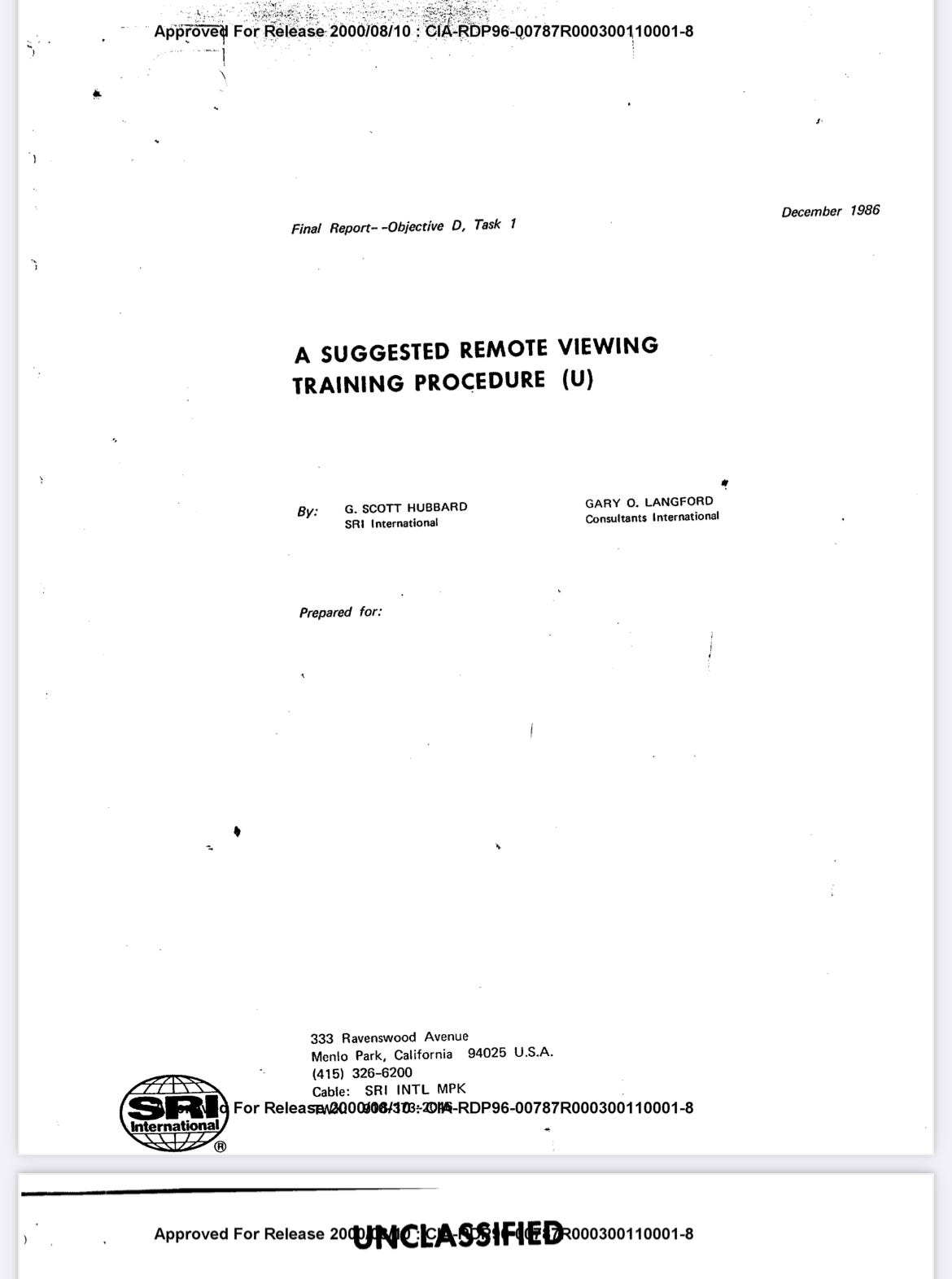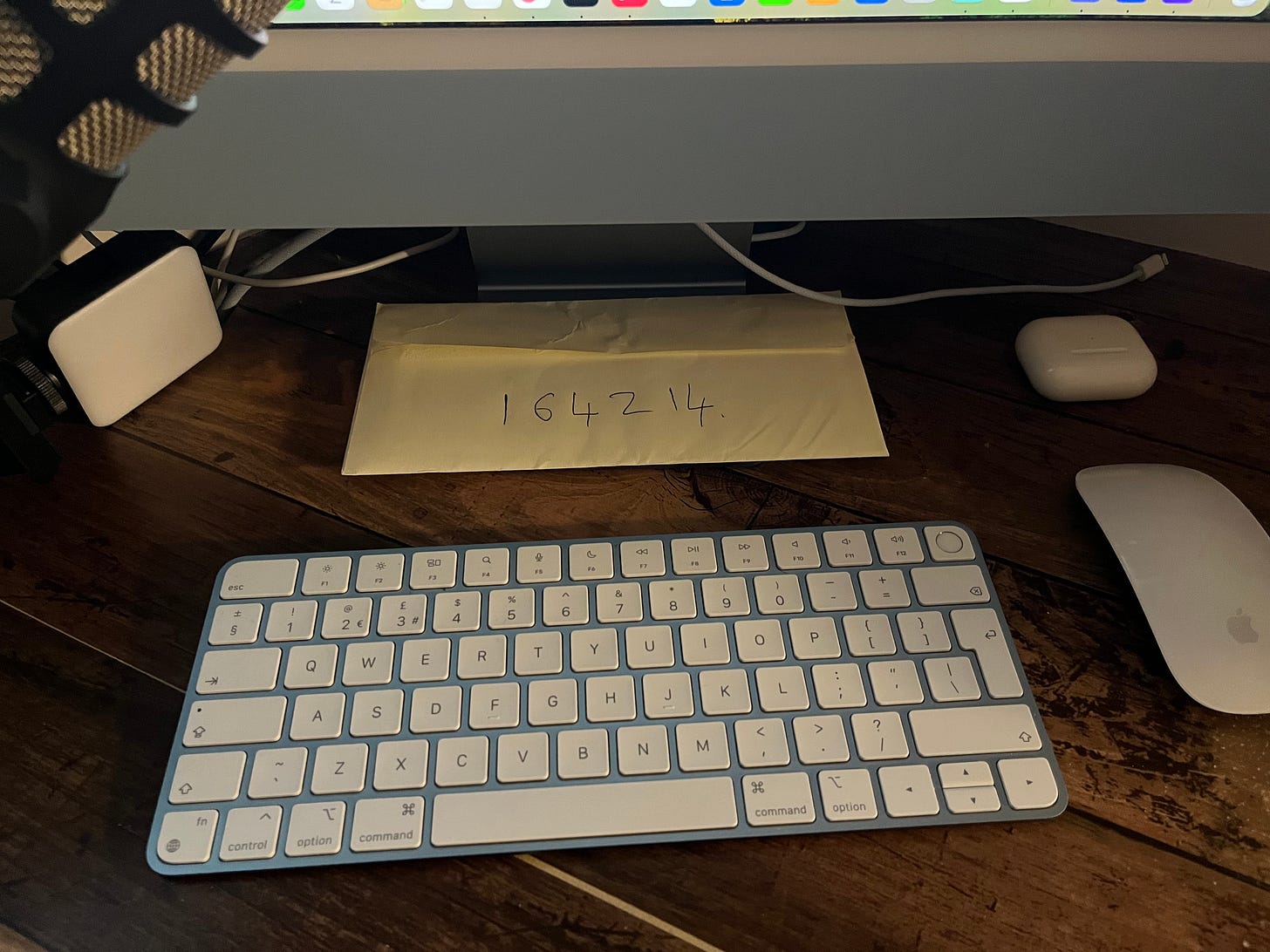The Art of Remote Viewing: A Step-by-Step Guide Based on CIA's Project Stargate
Written by UAP Files - Jimmy
Remote viewing, once the realm of classified government projects, has captured the imagination of many interested in the unexplained and the extraordinary. Made famous through Project Stargate, a secretive program run by U.S. intelligence agencies including the CIA, remote viewing aimed to tap into the human mind's potential to perceive distant or unseen targets using extrasensory perception (ESP).
As more documents from the Stargate program have been declassified, Books like Imminent: Inside the Pentagons Hunt For UFOs (by Luis Elizondo) are published and a renewed interest in the esoteric become public and accessible, offering a glimpse into how trained individuals were able to perceive locations, objects, and even events beyond their immediate sensory reach… well, let’s just say things are getting weird.
This article draws on publicly released information, particularly from the CIA and the Stanford Research Institute (SRI), to outline a practical guide for anyone interested in exploring remote viewing themselves. Please bear in mind, however, I have no idea how to remote view. I have zero skills and I am the furthest from an expert one could be. But, I’ve collated everything I can find that’s out there from declassified and FOIA’d documents and put together a CIA ‘how to’ guide. And here is what I’ve found.
The Remote Viewing Process: An Overview
At its core, remote viewing involves a viewer—often someone in a relaxed, meditative state—who attempts to perceive and describe a distant target. A monitor may guide the session, keeping the viewer focused without giving away specific details about the target. The viewer then records their impressions, which could include images, shapes, colors, or even abstract feelings.
The process is surprisingly structured, emphasising both intuitive and analytical skills. According to declassified CIA documents, this method was refined over years of experimentation and research, particularly during the height of the Cold War.
A 10-Step Guide to Remote Viewing
If you're curious about trying remote viewing yourself, here's a practical 10-step guide inspired by the protocols developed during Project Stargate:
1. Preparation and Relaxation
- Begin by finding a quiet, comfortable space where you won't be disturbed. Sit down, close your eyes, and take deep, slow breaths to enter a calm, relaxed state. Your goal is to quiet both mind and body, preparing yourself for the session.
- CIA Document Reference: "The subject should be in a relaxed state, preferably in a quiet, dimly lit room..." (Stargate Collection, p. 45).
2. Establishing Intent
- Clearly set your intention to perceive the target. This is not about focusing on a specific target but rather on the process of perceiving whatever the target may be. Keeping your mind open is crucial to avoid bias.
- CIA Document Reference: "The viewer should be aware of the goal, to describe the target, but not know what the target is..." (Coordinate Remote Viewing (CRV) Stages I-VI and Beyond, p. 12).
3. Assigning Target Coordinates
- Have someone (a monitor or a separate source) assign a random set of numbers to the target. These numbers, often called "coordinates," serve as a mental anchor for your focus during the session.
- CIA Document Reference: "Random coordinates are assigned to the target to prevent front-loading and to ensure the viewer has no prior knowledge." (Stargate Collection, p. 67).
4. Initial Impressions (Stage 1)
- Focus on the coordinates and allow your mind to relax further. Pay attention to any initial impressions that come to you—these could be vague shapes, colors, or even emotions. Write down or sketch these impressions without overthinking.
- CIA Document Reference: "The first stage is about recording basic perceptions and is often vague, such as 'something round' or 'water.'" (Coordinate Remote Viewing (CRV) Stages I-VI and Beyond, p. 18).
5. Exploration of Perceptions (Stage 2)
- Begin to explore these initial impressions in more detail. Let your mind delve into the textures, temperatures, or specific features that emerge. Continue to sketch or note down these perceptions as they come.
- CIA Document Reference: "In Stage II, viewers begin to perceive more specific sensory information, like sounds, smells, and temperatures..." (Coordinate Remote Viewing (CRV) Stages I-VI and Beyond, p. 21).
6. Detailed Observation (Stage 3)
- As more details start to form, try to construct a clearer picture of the target. Focus on specific details or structures within your perceptions, and begin to piece these elements together into a more cohesive image.
- CIA Document Reference: "Stage III allows the viewer to sketch more refined images of the target based on the evolving data..." (Coordinate Remote Viewing (CRV) Stages I-VI and Beyond, p. 23).
7. Deep Analysis (Stage 4)
- Now, start analysing the impressions and data you’ve gathered. Look for patterns or consistencies. Be mindful of analytical overlays, where logical thinking starts to influence your perceptions—try to separate these from genuine insights.
- CIA Document Reference: "Stage IV involves a mix of sensory information and analytical thought. The viewer must discern genuine perceptions from analytical overlays." (Coordinate Remote Viewing (CRV) Stages I-VI and Beyond, p. 28).
8. Summarising Data (Stage 5)
- Compile all the information you’ve gathered into a summary. This might be a narrative, a detailed diagram, or a comprehensive drawing that captures the key elements of the target as you perceived them.
- CIA Document Reference: "The viewer summarises the information, aiming to describe the target with as much accuracy as possible..." (Stargate Collection, p. 92).
9. Feedback and Analysis
- After the session, if the target is known, compare your results to the actual target. This feedback is vital for improving your skills. Analyze both your accurate perceptions and areas where you deviated.
- CIA Document Reference: "Feedback is essential for the viewer's learning process, helping to calibrate perception and analytical skills." (Stargate Collection, p. 95).
10. Post-Session Reflection
- Take time to reflect on the session. What worked well? What could be improved? Keeping a journal of your experiences will help track your progress and refine your abilities over time.
- CIA Document Reference: "Post-session analysis and journaling help in refining the remote viewing process and improving accuracy over time." (Coordinate Remote Viewing (CRV) Stages I-VI and Beyond, p. 35).
Remote viewing is an intriguing blend of intuition, structure, and analysis. While the process might seem esoteric, it is grounded in years of research and experimentation, as evidenced by the declassified documents from Project Stargate, a project that the CIA seemed to value so much, they let it run (and funded it with your tax money) for around twenty two years. Whether you’re a skeptic or a believer, this subject is and will continue to become relevant right now. Why not give it a try and let me know how you get on.
Joe McMoneagle (ex Intelligence Officer and Project Stargate member) said recently:
“a lot of the public have the ability, they just don’t realise”.
UAP Files Podcast Experiment:
Under my computer, in my study (posh word for spare room with a desk in it) is a computer. Under that computer is an envelope. That envelope has the numbers:
1 6 4 2 1 4
Inside that envelope is a simple drawing of something.
What is it?
If you think you know, drop me a comment or send me a DM. Anyone that gets it right will receive a prize!







Great job summarizing. Thank you for taking the time to write this.